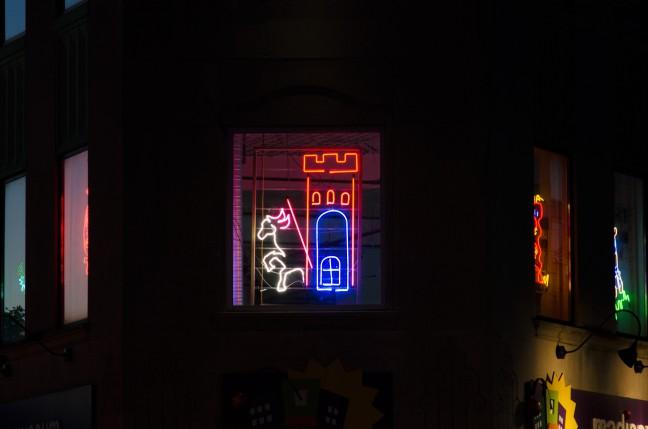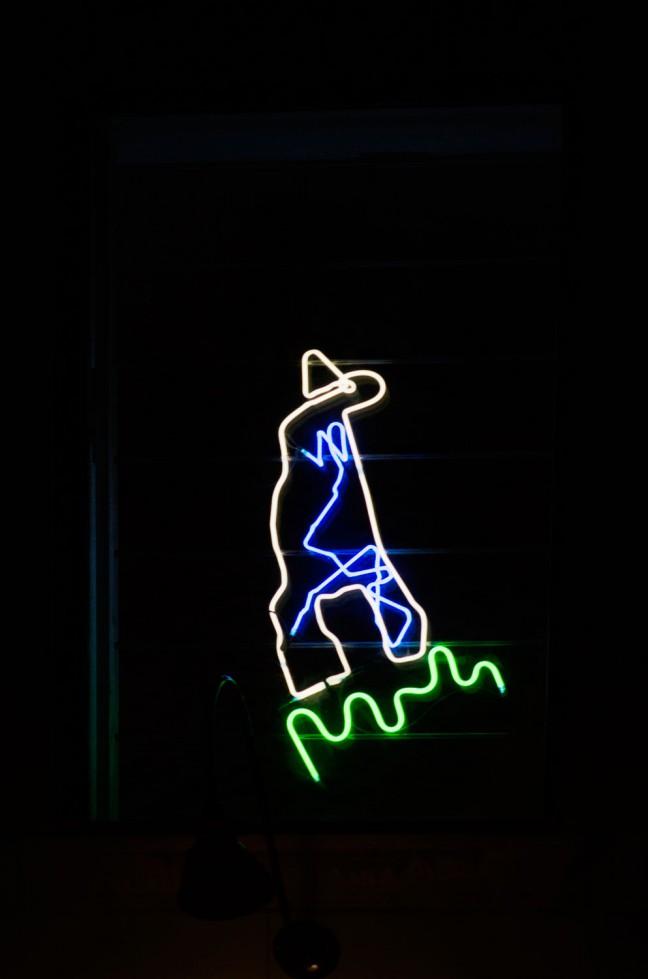Some college students are bringing children’s drawings to phosphorescent life at the Madison Children’s Museum.
In 2014, University of Wisconsin professor Bradley Corso and students from his neon-sculpting course teamed up with the Madison Children’s Museum for the first time to replicate kids’ vibrant drawings. For the annual, yearlong Glow Show exhibit series, Corso and his students work with drawings in the museum’s art studio from kids ranging in age from kindergarten to early elementary, he said.
“I’ve always enjoyed kids’ drawings,” Corso said. “They’re so honest and so indiscriminate. It’s a really good interface for my students to get into that mindset. So often as artists, or also just as adults, we tell ourselves we know what we’re doing — when that’s not exactly reality all the time.”
One of the few neon programs in the country, Corso typically oversees between 10 and 15 students in “Neon: Light as Sculpture.” The class is only offered in the spring and UW relies heavily on donations to fund it, Corso said. He said students may purchase additional glass out-of-pocket to adhere to their piece’s color scheme.
In photos: #TheRealUW art exhibition raises awareness of marginalized students’ campus experiences
UW junior Ben Orozco, who was involved in the project and class this year, said the course maps out a series of three projects, each one emphasizing a critical principle of neon and glass. These include, for the Glow Show exhibit and final project, installing and transporting neon. An active, advanced medium, Orozco said neon art is a challenge for any new student.
“Neon is like a game of snakes and ladders,” Orozco said. “Some days you might make some progress, other days your piece might break and you go back to the beginning. The entire process is pretty fun, and also a little dangerous — but I think the reward really pays off.”
This year’s exhibit was Orozco’s first year participating, and he opted for a drawing of a worm. He aptly translated the image into neon, thanks to its bold color scheme and linear qualities. The worm was one of many drawings created in a museum art studio guided by cartoonist, writer and UW art professor Lynda Barry.

For the third Glow Show exhibit, Corso’s students selected from a pool of drawings containing straightforward images drawn by kids per Barry’s instruction. Kids interpreted and drew images such as a pair of scissors, a bird or a house on fire, Corso said.
Corso said she instructed the kids to draw these images for a reason. Describing them as “evocative images,” Corso said a component of Barry’s art research centers on comparing the way different age groups respond to and translate certain pictures.
Corso said Barry’s project worked well not only for his students, as they grasped the challenge of neon art, but for the children — their drawings the groundwork for the exhibit’s electrifying pieces.
“Everyone wins with this show,” Corso said. “My students get a yearlong show in a museum right in downtown Madison. The kids get to see their drawings turned into something.”



